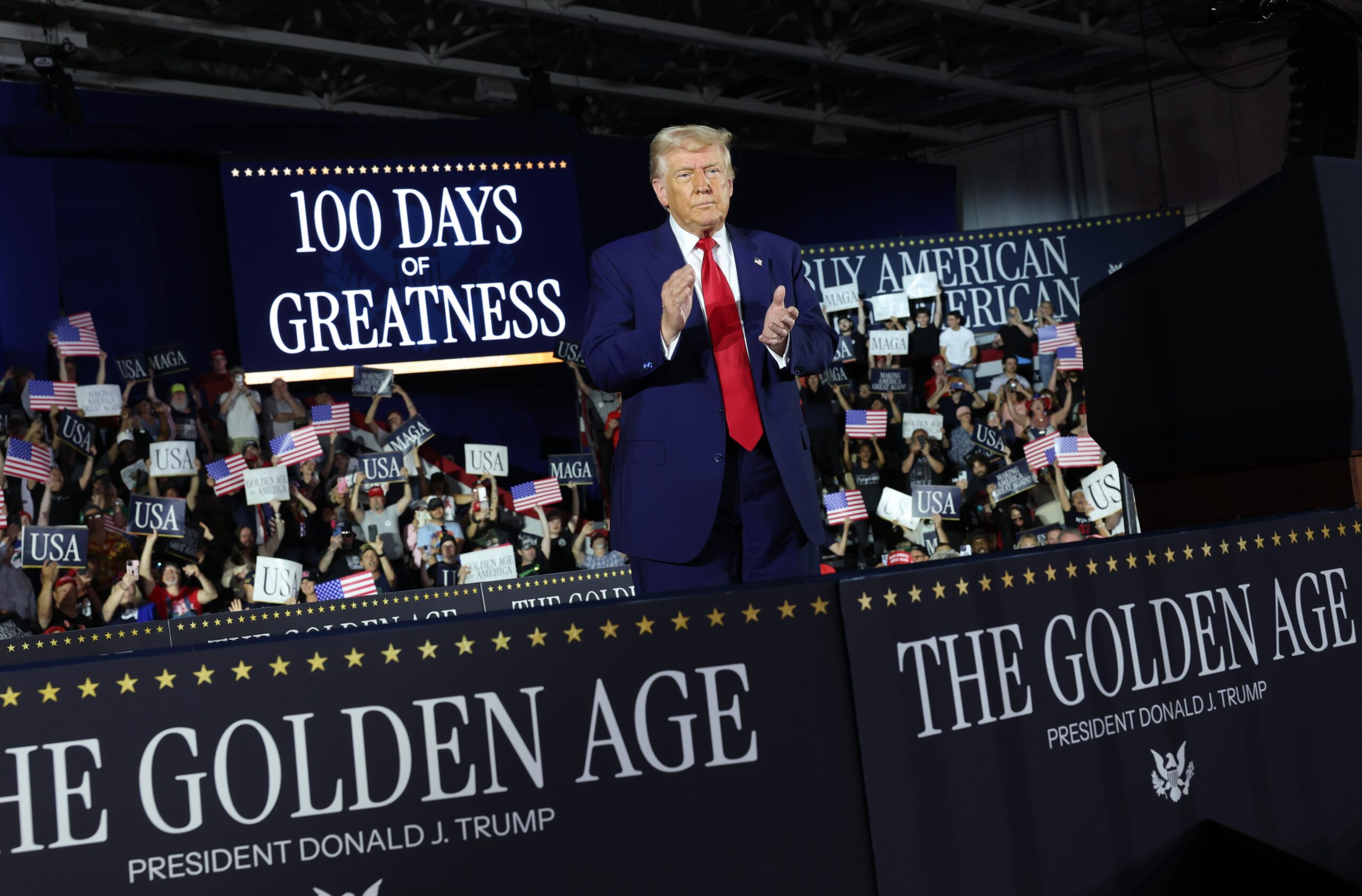
Trump’s Second Term Approval Ratings Plummet to Historic Lows After 100 Days
President Donald Trump’s second stint in the Oval Office is facing significant headwinds, marked by a noticeable decline in public approval. A barrage of polls released recently, coinciding with the milestone of his first 100 days, paints a concerning picture for the president, indicating approval ratings that have dipped to historic lows, unseen by any president in recent decades.
According to an average of recent polls compiled by RealClearPolitics’ polling data division, Trump’s approval rating has lingered around 45% from late April into the beginning of May. This figure represents a stark deviation from the typical approval ratings enjoyed by presidents during their initial 100 days. Examining presidential approval history back to 1953, Trump’s current numbers are particularly concerning. The only other president to experience such unfavorable approval ratings at this stage in their tenure is Trump himself, during his first term, when his favorability rating fell to 41% in April 2017, as documented by Gallup data.
A deeper dive into the specific polls released during this period reveals the extent of the challenge facing the president.
A Patchwork of Disapproval: Examining Key Polls
While President Trump celebrated his first 100 days with a rally in Michigan on April 29th, the latest polling data offers a starkly contrasting narrative. Multiple surveys placed his approval rating in the low-to-mid 40s, highlighting a significant disconnect between the president’s public persona and the sentiment of the broader American populace.
Some polls conducted in the week of April 20-26 yielded even lower numbers, further underscoring the depth of the president’s approval deficit. CNN and The Economist/YouGov polls, released the previous week, indicated an approval rating of just 41% for Trump. The lowest approval rating was recorded in an April 25 poll conducted by The Washington Post, ABC News, and Ipsos, which placed the president’s favorability at a mere 39%. This figure represents a six-percentage-point drop compared to a similar survey conducted in mid-February, indicating a continued downward trend in public sentiment.
When asked to evaluate the president’s performance in office thus far, nearly half of the respondents assigned him a failing grade, while only 23% awarded him an "A." This particular survey, conducted among national adults from April 21-23, had a margin of error of ±3.3 percentage points.
Economic Discontent: A Primary Driver of Low Approval
A recurring theme emerging from recent polling data is widespread discontent over the economy. This issue appears to be a significant factor influencing Trump’s favorability. In the Economist/YouGov poll, conducted from April 25-28, 41% of respondents approved of the president’s handling of the economy, while a majority, 51%, disapproved. The poll carried a margin of error of ±3.2 percentage points. An additional 10% of respondents identified as neutral on the issue. Compared to an earlier survey conducted by Emerson College marking Trump’s first 50 days in office, the president’s approval numbers have decreased by two points, while the percentage of those who disapprove has remained unchanged.
Notably, nearly half of those surveyed believe that Trump’s economic policies are negatively impacting the economy, while 29% believe the administration’s policies are having a positive effect. Another 23% believe that his policies are either having no impact or that it is too early to assess their effects. Overall, 37% approve of Trump’s handling of the U.S. economy, while 49% disapprove, highlighting a significant challenge for the president in addressing economic concerns. This poll, conducted from April 25-28, had a margin of error of ±3 percentage points.
Immigration and Trade Wars: Further Fueling Disapproval
A Reuters/Ipsos poll, released on April 30, reinforced the trends observed in earlier surveys, showing a continuation of the low approval numbers. This poll identified discontent over the economy, immigration, and trade wars as key factors contributing to respondents’ unfavorable view of the president. Approval of Trump’s economic stewardship stood at 36%, marking the lowest level he has experienced across both terms, according to Reuters. This represents a one-percentage-point decrease from the outlet’s previous poll conducted from April 16-21.
On the issue of immigration, approval of the president’s stance remained consistent between the two surveys, at 45%. However, disapproval increased by two points, rising from 46% in the previous poll to 48% in the latest survey. This poll was conducted from April 25-27 and had a margin of error of approximately 3 percentage points.
Margin of Error Considerations
It is essential to consider the margin of error associated with each of these polls. The margin of error indicates the range within which the true population value is likely to fall. For instance, a poll with a margin of error of ±3 percentage points suggests that the actual approval rating could be three points higher or lower than the reported figure. While the individual results of each poll may vary slightly, the overall trend indicates a significant decline in President Trump’s approval ratings during his second term, particularly during the first 100 days.
Implications for the Future
The low approval ratings present a significant challenge for President Trump moving forward. Historically, low approval ratings can make it more difficult for a president to advance their legislative agenda, garner support for policy initiatives, and maintain public confidence. The economic concerns, particularly, highlight the need for the administration to address these issues effectively to improve public sentiment. The combination of economic worries, concerns about immigration, and disapproval of trade policies suggests that the president faces a complex set of challenges that require careful consideration and strategic responses. Ultimately, the ability of the Trump administration to address these issues and regain public trust will likely determine the trajectory of his second term in office.
The prevailing sentiment gleaned from these recent polls paints a less-than-optimistic picture for the president, potentially signaling a rocky road ahead as he navigates his second term in office.
